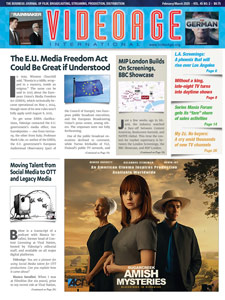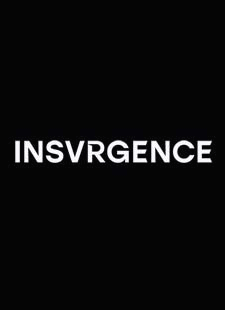Last autumn, the world hailed the agreement between the Writers’ Guild of America (WGA) and the Alliance of Motion Picture and Television Producers, Inc. (AMPTP) as a victory for writers over the threats posed to their livelihoods by generative AI.
What nobody seemed to focus on is the threat that generative AI (genAI) may pose to studios and content producers. And the threat is substantial.
The writers’ historic 148-day-long strike action was ended by a 95-page contract in September 2023. It aimed to address the creatives’ fear that their talent may be degraded to re-writing or polishing (for a fraction of their current pay and with less or no credit) materials produced by machines, which can (or soon will likely be able to) write quicker and cheaper than humans can ever hope to. Both parties, writers and producers alike, appeared to presume that by using genAI, studios can accelerate the speed and reduce the cost of writing without diminishing their opportunities to exploit the output.
This presumption is false — unless the laws on copyright are changed soon.
Copyright laws (or, as most European countries refer to them: “authors’ rights”) only protect works created by humans. While most countries do not set any minimum standards on a work’s artistic quality to allow for copyright protection, most jurisdictions require the work to be “individual” and “original,” meaning that they must be the fruits of a human being’s intellectual labor, reflecting, in a certain sense, that individual being’s personality. Mere ideas are not protected by copyright — only their creative expression may be protected.
This means that simple prompts given to ChatGPT or other similar tools are not, as such, copyrightable. And the end result, the written material, if spurted out by a machine, will not be protected by copyright — at least, not under the current laws.
Why is this potentially a problem for studios? Because if a script is not protected by copyright, then the studios have no way of guaranteeing exclusive rights to that script — nor to the storyline or characters created by genAI.
Studios can, of course, demand exclusivity from the writer who prompted the genAI to create the script, storyline, or character. But this exclusivity obligation will not be founded on a legislative instrument, it will merely stem from a contract. While the laws on copyright confer exclusivity on the copyright owner by offering protections against everyone, contracts are not binding on third parties. Therefore, a contractual exclusivity only applies in the relation between that particular writer and the acquiring producer — and not in the relation of the acquiring producer and its competitors.
When acquiring a script, or hiring a writer, the studio and the writer may agree (in the United States — less so in European countries) that the studio will own the copyright in the written materials. However, such a contract does not establish the copyright protection of the work, only transfers it. Copyright is established once a human creates a work, as regulated by law. If no such human creation takes place (or if the human action “controlling” the genAI tool does not amount to “creation” for the purpose of copyright law), then there will simply not be any copyright to own, let alone transfer. The materials will exist, of course, but the acquiring producer will not be able to impede anyone from copying and exploiting them — except the writer who will most probably be contractually bound to refrain from “re-selling” the same material.
Of course, it is unlikely that any studio would invest in a movie based on the exact same script as its competitor, even if the script is indeed unprotected by copyright. The issue becomes more pressing when genAI-created texts, characters, or images used by one producer are taken by another to create sequels, prequels, spin-offs, or merchandise. This is not to say that such action would be entirely without legal risks. But it is fair to say that the use of genAI in an industry which heavily relies on the legal protections offered by copyright laws is bound to cause new disruptions. If the laws will no longer support exclusivity in the content, this will likely affect not just long-term but also mid- and short-term pricing strategies, and the value of the entire content market. Whether such change is for the better or worse, remains to be seen.
The question of whether genAI-created content should be afforded the same legal protection as human-created content is a hotly contested one. The birth of copyright protection is linked to the appearance of printing machines. It was based, among other considerations, on the realization that while it takes an author tremendous effort, time, and intellectual input to create a new piece of work, it takes a machine and its operator little to no effort to multiply and sell copies of the same work. Since machine-produced copies could reach an incomparably broader market than original creators could ever hope to access with their hand-crafted individual copies, the notion was born that authors should not only be remunerated for their actual labor, but should also be remunerated when they do not in fact work, yet their creations are used to earn money. Lawmakers understood that if society wished to benefit from certain individuals’ creativity, then intellectual work must be incentivized by such payments (and a set of exclusive rights to the work) or else the authors would starve.
The difference between then and now is that genAI not only offers to multiply human-created work but — with the help of some “prodding” by a human — creates the work. It is questionable whether lawmakers will see a need to offer payments (and/or the same set of exclusive rights) for genAI-created work, seeing as — contrary to humans — machines do not starve.
Over the past centuries, technological advancements from the typewriter through Photoshop to the wide range of music production and animation software, have, arguably, made the creative work easier. But all of these tools were merely used to make the process of creation more efficient and ease the challenge of transferring the creative thought into a tangible form. None of them promised to offer the creative spark or indeed take over the creative process with as much (or as little) prompting from a human as an editor may offer to a novel writer.
For now, while Hollywood’s writers exhale a sigh of relief, producers should be gearing up to face the challenges and legal risks ahead. Intellectual Property strategies should be devised not just on whether or not to allow the use of content to train genAI-systems and how to price such use, but also on whether or not to allow the use of genAI in acquired or produced content — and how the potential lack of copyright protection can be factored in the pricing and exploitation of such content. For it is likely that with the proliferation of genAI-created material, the first defense in any dispute will be whether or not the exclusive copyright in the work exists at all.
(By Anna Beke-Martos)
Anna Beke-Martos is a Hungarian attorney. The thoughts expressed in this article are the author’s personal views and do not constitute legal advice.
Audio Version (a DV Works service)












Leave A Comment